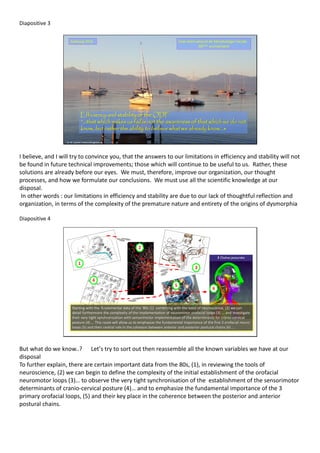1. The document discusses key information from research in the 1980s regarding the development of occlusal balance and postural balance.
2. It notes that differentiation of the fascia of the masticatory muscles occurs from birth to age 3, prior to development of deeper fascia.
3. It also discusses the predominance of proprioceptive receptors on the alveolar crest before tooth eruption, highlighting early neurosensorality.
4. The presentation aims to apply these findings to better understand the progressive establishment of orofacial muscle fascia and neuromotor loops from birth to age 3.










